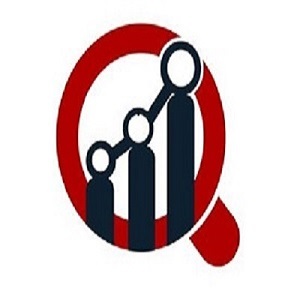Autism Disorder and Treatment Market Future Demand, Market Analysis And Outlook To 2030
Market
Overview
The Autism Disorder and Treatment Market was valued at USD 29.8 billion in
2021 and is projected to grow from USD 31.12 Billion in 2022 to USD 42.15
billion by 2030, exhibiting a compound annual growth rate (CAGR) of 4.43%
during the forecast period (2022 - 2030).
Market
Highlights
Leading to
the incidence of autism and Persistent Developmental Disorder (PDD) and the
understanding of autism within the patient population, the worldwide autism
diagnosis and care industry has been described as one of the fast-growing
markets. Owing to steps taken by the government of different countries and
planned approvals by the Food and Drug Association (FDA) of different off-label
medication treatments, autism disorder and treatment is seen as one of the
substantially rising industries in the healthcare industry.
Main
drivers driving the worldwide demand for autism spectrum disorder care are the
growth in the number of government-sponsored autism advocacy campaigns, the
advancement in innovative drugs, the increase in the number of autism patients,
and increasing research & development activities. Technology innovation
results in an E learning initiative to increase visibility in every part of the
globe. Another main fueling driver for the autism spectrum disorder care
industry is the rising number of branded prescription products for autism
therapy and pipeline medicines.
Competitive
Dashboard
Some of the
Autism Disorder and Treatment Market
Players are Eli
Lilly and Company, Allergan, Merck & CO Inc., Pfizer Inc., Teva
Pharmaceutical Industries Ltd., Consern Pharma Private Limited, Novartis AG,
Johnson & Johnson Services, Inc. Coronis Partners Ltd., Saniona AB,
Curemark LLC, Bristol-Myers Squibb and Otsuka Holdings Co., Ltd., Heptares
Therapeutics Limited, Intra-Cellular Therapies Inc., and few others.
Segmental
Analysis
The demand
for global autism disorder and therapy is segmented by type, type of treatment,
and medications.
·
Segmented by type Asperger Syndrome, Pervasive Developmental Disorder, and others. The
largest group, by form, is the omnipresent developmental condition, which is
expected to rise at a CAGR of 4.73 percent during the forecast period.
·
It is segmented into ABA (applied behavioural analysis), hyperbaric oxygen therapy, chelation
therapy, oxytocin therapy, and others according to treatment type.
·
By treatment type, ABA is the largest segment in the world and is projected to rise at a
CAGR rate of 4.82 percent during the forecast period.
·
It is segmented by drugs into SSRIs, anti-convulsants, stimulants, anti-psychotics. There is a
segmentation of anti-psychotics into Abilify (aripiprazole) and Risperidone. In
the global autism condition and addiction therapy industry, the anti-psychotic
accounted for the highest market share and is projected to rise at a CAGR of
3.95 percent for the forecast period.
Regional
Overview
The global demand
for autism disorder and treatment is split into four areas, including the
Americas, Asia Pacific, Europe, and the Middle East & Africa, with the
highest autism disorder and treatment market share being held by the Americas,
followed by Europe.
In the
Americas, due to the growing screening of autism cases in that area, North
America was the largest market. In addition, the legalisation of the atypical
anti-psychotic and planned launch, such as Latuda and Namenda, is expected to
produce increased revenue in the post-approval U.S.
Asia
Pacific is projected to be the fastest growing region, with stable development
and growth in the Middle East & Africa throughout the forecast period.
Japan leads the Asia Pacific region. The fact that increasing screening is the
probable cause of increasing cases of Autism can be mirrored in close
observation. This represents the needs of the developed world that are untapped
and unmet. In the years to come, the competition will therefore be dominated by
industrialised regions and the developing region's market will only speed up
after the introduction of a specific medicine. The demand for
non-pharmacological care would be more influenced by government policy and
increasing wages, especially in the developed world.
Related Report-
·
Process
Analytical Technology (PAT) Market Research Report- Global Forecast To 2027
·
Global
Anti Asthma Drugs Market – Forecast to 2027
About US:
Market Research Future (MRFR) enable customers to unravel
the complexity of various industries through Cooked Research Report (CRR),
Half-Cooked Research Reports (HCRR), Raw Research Reports (3R), Continuous-Feed
Research (CFR), and Market Research & Consulting Services.
Contact us:
Market Research Future (part of Wantstats Research and Media
Private Limited),
99 Hudson Street,5Th Floor, New York,
New York 10013




Comments
Post a Comment